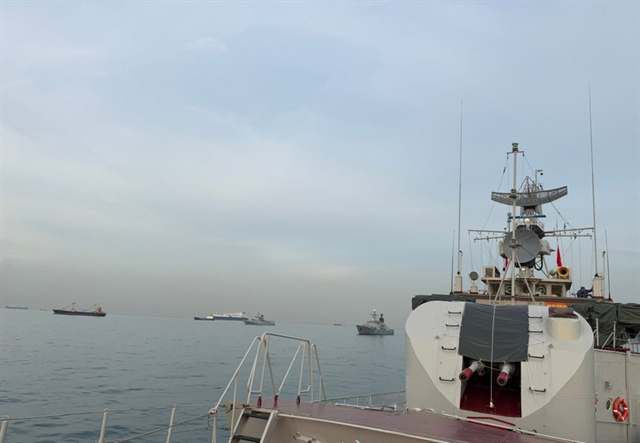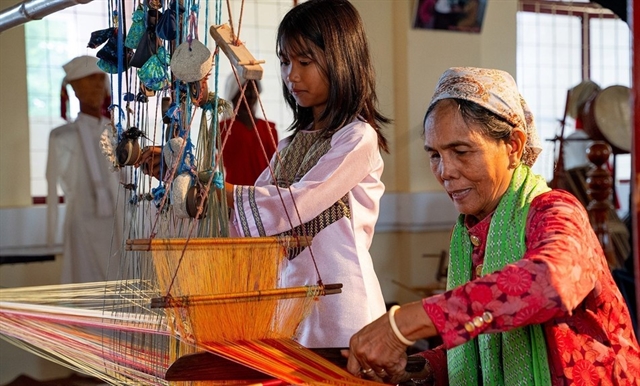 Features
Features

Authorities have turned the famous Huế citadel into a night attraction, with the former palace hosting programmes reflecting life during the heydays of the Nguyễn Dynasty.
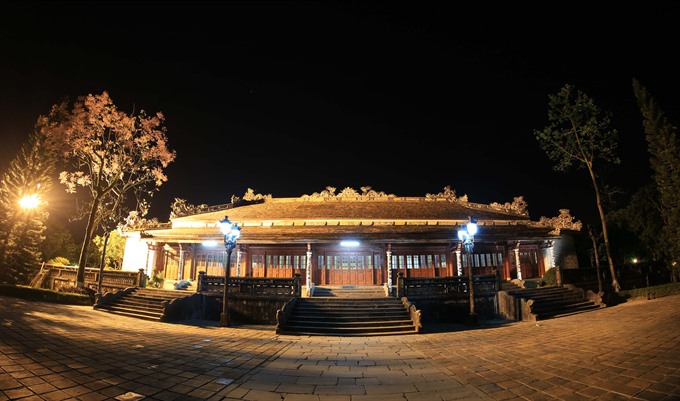 |
| Royal space: The backyard of Thái Hòa Palace, lit up at night. — VNS Nguyễn Văn Sum |
Authorities have turned the famous Huế citadel into a night attraction, with the former palace hosting programmes reflecting life during the heydays of the Nguyễn Dynasty.
by Phước Bửu
It might not be an original move, but one of the most famous historical monuments in the country, the imperial palace of the Nguyễn Dynasty (1802-1945), can be seen in a new light now.
More than seven decades after the dynasty’s century plus reign ended, the palace has come out of the shadows of the night with local authorities turning into a night attraction, inviting visitors from within and outside the country to admire the impressive structure and get a feel for life in the glory days of the dynasty, with programmes featuring re-enactment of some royal rituals and royal music performances.
The latest initiative of the Huế Monuments Conservation Centre has been welcomed by locals, visitors and tour operators.
The centre’s director, Phan Thanh Hải, said they were encouraged by the fact that almost 500 people visited the citadel to enjoy the night programme on the day it opened in late April.
“We think the night programme has been successful so far. This is encouraging and we are going to review it and improve upon it so that we can have more tourists visiting the citadel at night,” said Hải.
Inspired by the show "Imperial Palace at Night" that is held during the biennial Huế Festival, the night programme is a daily version which does not include the royal banquet. Every night, visitors get a chance to watch multiple shows at different places around the former imperial palace.
A re-enactment of the Royal Patrol is the first event to greet visitors when they enter the main gate at Ngũ Phụng Pavilion at 7pm every evening. People dressed as mandarins and soldiers, just as they used to under the Nguyễn Dynasty, take part in the patrol. They act out scenes, accompanied by authentic traditional music performed by musicians also dressed in royal costumes.
Behind the Ngũ Phụng Pavilion, visitors can step up to the front yard of the Thái Hòa Palace, which was where kings and leading mandarins worked in the morning. The yard now hosts live performances of nhã nhạc, or royal court music, an art form that the UN cultural agency UNESCO has listed as a world intangible cultural heritage.
Those who linger in the yard will be able to watch rehearsals by the imperial palace’s inner guards who practise martial arts.
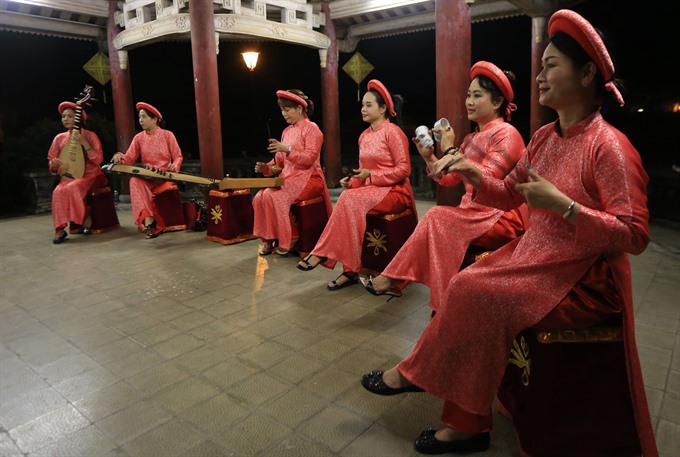 |
| Traditional music: A ca Huế performance. — VNS Nguyễn Văn Sum |
Near the Kiến Trung Palace, behind the Thái Hòa Palace, visitors can listen to ca Huế, also known as "the Huế tune". This is a variation of royal music that includes songs with lyrics, including some folk songs and others were composed by royal family members and yesteryear poets.
These performances, featuring traditional Vietnamese instruments like the đàn tranh (16-string zither), đàn nhị (two-string fiddle), đàn nguyệt (moon-shaped lute) and sanh tiền (wooden clappers), are more authentic and of a higher quality than the more casual ones visitors get to enjoy on boats plying the Hương River. A particularly attractive feature of this music is the teacup clappers who provide rhythmic accompaniment, creating a unique sound akin to the clapping of hands.
A dance-play that used to be performed for the royal family is staged every night at the Trường Sanh Palace. This might be difficult for foreigners to understand. Furthermore, the venue is a long walk away from the entrance, so only the keenest cultural aficionado is likely to make it there.
Interactive culture
Those who are interested in doing something more than listening and watching the cultural programmes have the option of joining royal games. This is likely to instill an appreciation of how hard some of these games were to play.
Đầu hồ, for example, involves throwing bamboo arrows into vases with narrow necks. Players stand about 5m in front of the vases and throw the arrows. Different vases are used, depending on the difficulty level.
With the three hours that visitors have inside the citadel, one of the best things to do is to reserve some time for walking and looking at the buildings from the outside. It could end up being the best part of the night, watching the imposing monuments lit up at night, because it lends an aura of mystery to the whole place.
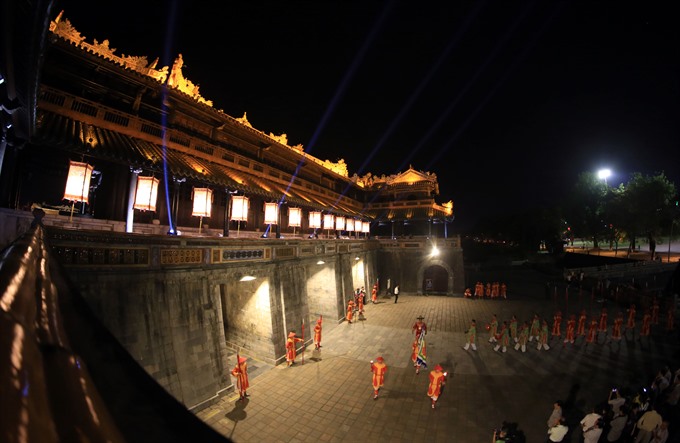 |
| Throwback: The Royal Patrol enacted in front of the Ngũ Phụng Pavillion. — VNS Nguyễn Văn Sum |
“It was a really good experience. The shows were interesting and the ambience was something we could not have imagined some decades ago,” said Phạm Thị Thùy Trinh, a 71-year-old local resident.
Trinh used to live inside the former Imperial Palace at a time when the Huế College of Arts was located there. Many college staff used the royal buildings for their lodgings.
Before UNESCO recognized the complex of royal monuments as a world tangible heritage in 1993, the palace was left uncontrolled and intruders had free run of the place.
Hải said that his office had planned the night programme at the citadel a long time ago, but they only got the go ahead from provincial authorities recently.
Nguyễn Văn Phúc, deputy head of the Thừa Thiên- Huế Province Tourism Department, said the show would benefit the province’s tourism industry, and make the city a key national heritage landmark.
“The ’Citadel by Night’ programme has proved to be the most striking tour. Visitors have enjoyed it,” Phúc said.
According to a survey conducted by the department, travel agencies in Huế and around the country in connection with the ’Citadel by Night’ programme have considered it a good one to hold back tourists in Huế.
Officials feel the programme can help turn the spotlight on all tourism attractions in Huế, its monuments, mountains, pagodas, monasteries, Southeast Asia’s biggest lagoon system and areas where ethnic minorities reside.
For years, the province has lagged behind neighbouring localities like Đà Nẵng, Hội An and Phong Nha in exploiting its large tourism potential, and the night programme could help change that.
While it is too early to evaluate the long-term effectiveness of the programme, the conservation centre is happy with the good start it has seen.
Some people, however, have expressed concerns about overloading the ancient buildings with visitors, adding considerably to its wear and tear. For now most people are content to let the monuments bask in the night light. VNS
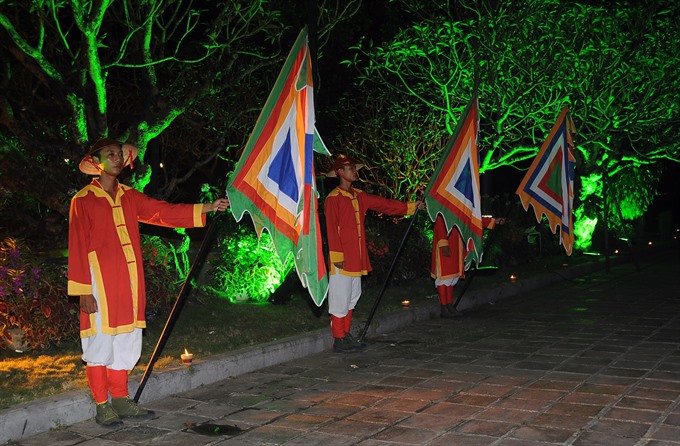 |
| On guard: The Royal Patrol is enacted every night at the Hue Citadel. — VNS Nguyễn Văn Sum |
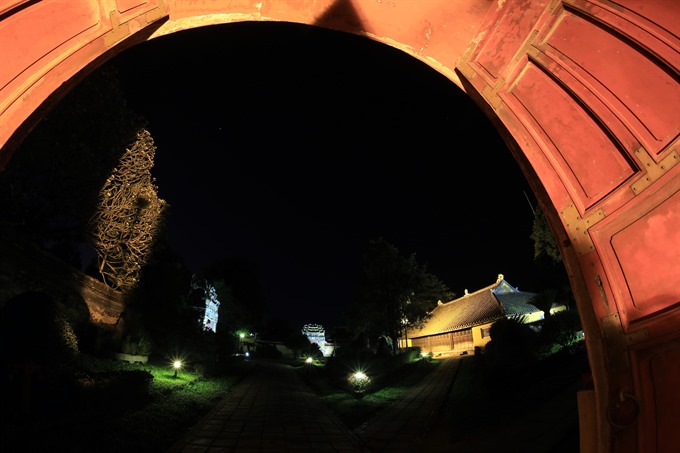 |
| Glowing in the dark: Inside the Imperial Palace at night. — VNS Nguyễn Văn Sum |
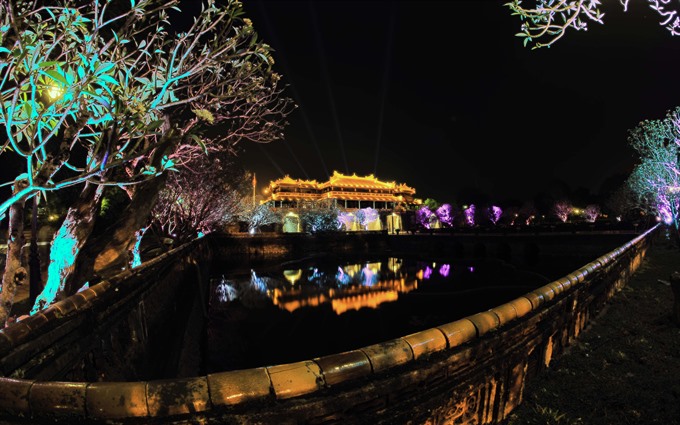 |
| Reflection: The Thái Hòa Palace. — VNS Nguyễn Văn Sum |
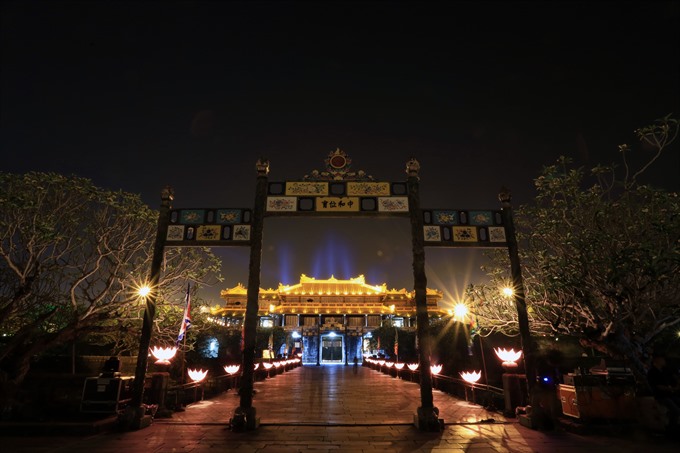 |
| Glittering: The Noon Gate and Thái Hòa Palace at night. — VNS Nguyễn Văn Sum |




